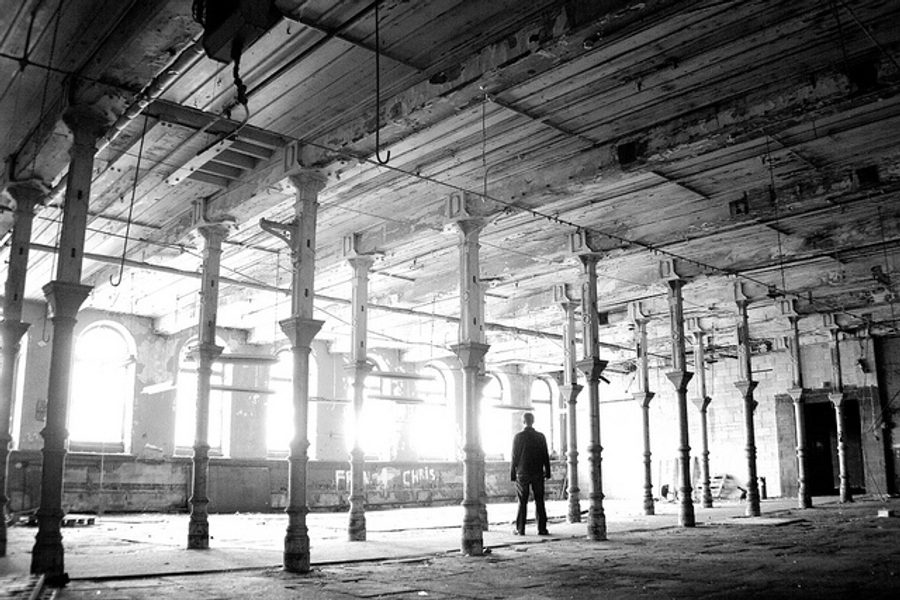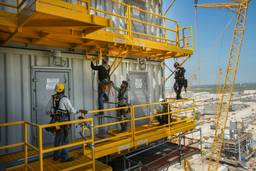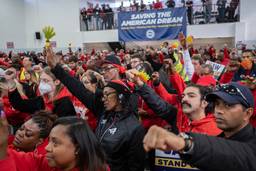‘I Didn’t See These Times Coming’: The Economic Despair Behind the Rise in Blue-Collar Deaths
Stephen Franklin

His hope had turned to dust.
He had lost a good union job when his factory shut down. He refused to take welfare, despite a long and fruitless job search, and finally landed back at the old plant, earning far less on a production line that now paid him piece by piece.
And so he was dead set on going to a lonely hilltop the next day with a rifle to take his life. That’s when I happened to call — he was one of the laid-off factory workers whose lives I had been reporting on, and I was checking in. He told me his plan, and I asked if we could meet in the morning. I was panicked. He said he hadn’t talked to any mental health workers, and I felt I had to do something.
We met the next day at a dingy basement apartment, where I nodded at his young wife and several young children, and we headed out to the hilltop.
Standing on the cold, windy field, we talked about his former factory mates: how they suffered and struggled and somehow got by. I had gotten to know nearly all of them in the year’s reporting on the lives of the workers at a small Michigan auto parts plant.
There was a long awkward silence, and then the babv-faced 33-year-old worker told me he wouldn’t harm himself. He wasn’t a weak man, he explained. But everything had just overcome him. “I didn’t see these times coming,” he said.
He was among many souls badly bruised in the early 1980s as waves of layoffs, cutbacks and shrinking benefits and wages ambushed the nation’s blue-collar workers. Most of those workers I met then and afterward were like him: men without much schooling who thought they would just keeping riding the American dream with their strong arms and backs.
I suspect that more than a few fell victim, eventually, to the trend recently pointed out by two Princeton economists, Angus Deaton and Anne Case: There has been a surprising upward turn in the death rate of middle-aged white Americans, especially those with less education. The “turnaround” in the once-falling mortality rate was mostly driven by the deaths of men with a high school degree or less, the researchers report.
Looking at the death rate for white men ages 45 to 54 between 1999 and 2013, they found that the rate suddenly began increasing after years of steadily declining. Yet the death rates for similarly aged black and Latino men continued to fall. The surge in death rates for middle-aged white men is a situation without parallel, they say, in any rich country.
Driving this tragic reversal, they explain, were increased death rates from suicide, drug and alcohol poisoning, chronic liver diseases and cirrhosis. If the downward trend had continued at the same pace, there would have been 96,000 fewer deaths among these middle-aged white men over those years.
What brought this on?
The researchers are uncertain, but they suggest several causes. A major one, they suggest, has been the dramatic growth in the fatal use of painkillers, along with cheaper and greater availability of heroin. Along with these changes, they point to interviews that show increases in these workers’ “distress”: greater loneliness and isolation, emotional unease and physical pains.
They also point to a more nebulous factor: the sudden downward slide in prosperity for workers with limited schooling. They wrote:
After the productivity slowdown in the early 1970s, and with widening income inequality, many of the baby-boom generation are the first to find, in midlife, that they will not be better off than were their parents.
That’s no surprise to anyone who has spent any time these last few years at an unemployment office, union hall or bar in a community where decent-paying blue-collar jobs have vanished and for those lucky enough to find a job, pay and benefits have withered away. Between 1999 and 2013, for households whose primary earner had only a high school degree, the median real wage fell 19 percent.
As unions have disappeared, so have the pension plans that once gave workers security. And so have job safety protections, as workers hustle to get even dangerous jobs that come with no oversight by a union or anyone else.
Marriages have collapsed, and others have been put off or cancelled. Lonely jobless men rush to the oil fields, or wherever there’s work, to labor in isolation with their lives in deep freeze.
Lower pay and fewer jobs have meant an eagerness to grab as much income as possible while they are employed. That is what motivated a middle-aged miner from southern Illinois whom I talked with recently as I was looking into the growing nationwide effort to trim workers’ compensation.
Until not long ago, he would put in seven days a week on the job, even though the decades of hard work had taken a toll on his body. The damage finally caught up with him, however. Virtually paralyzed in both arms by the years of repetitive stress, he lives alone, his marriage shattered and his savings gone. He is getting by today on a meager workers’ compensation check — won after a long legal battle — that’s a slim fraction of what he once earned.
Maybe you can’t measure this number, but the collective heartbreak suffered largely by blue-workers seems to me to surely have been a killer, taking lives before their time.
I know because I’ve watched it grab hold of workers, who have drifted off into silence, depression or alcoholism because of their despair. I was struck by the pain of wives of striking workers in a small Illinois town in the 1990s, who had come together to talk and bond because their husbands wouldn’t, and because some of the men were drinking themselves numb.
After their middle-class career dreams have shriveled up and their marriages, and communities evaporated, these are likely to be the men who succumb to depression, alcohol or drug addictions. This is the flesh-and-blood line-up of the statistical trend the economists discovered.
From town to town and factory to factory, I’ve come to realize that the most lethal impact of the hollowing out of the American workplace is the psychic wound it deals.
It’s a wound that cuts into American workers’ deeply held belief that they can do better than those before them if only they keep their heads down and work harder. It’s a wound that leads to the crippling realization that you are on your own when everything falls apart. And the wound slices even deeper as workers struggle to live up to the very American mantra that you need to stand alone, on your own two feet.
Tracking down the heads of troubled union locals in the 1980s, when massive waves of job losses were galloping across US factories, I was moved by how many outwardly seemed determined to stand tall amid seemingly hopelessness situations.
But I was also struck by the disappearance of these mostly middle-aged men. Where had they gone?
I began to understand the toll of the despair that leads to drugs, pain killers, depression, or simply intense stress, and ultimately shortens lives.
One day, after repeated calls to the union local, I finally reached the widow of a former shop chairman at a small plant in central Michigan. Not long after the abrupt closing of the plant where her 55-year-old husband had spent much of his life, he had died of a heart attack.
“We really had nothing to live on but our little savings,” she told me. “I knew it did have an effect on him. He held it inside.”
Stephen Franklin wrote for many years about workers’ lives at the Detroit Free Press and Chicago Tribune.
A former labor writer for the Chicago Tribune, Stephen Franklin is a Pulitzer Prize finalist and an adjunct professor at the University of Illinois Urbana-Champaign School of Labor and Employment Relations.







